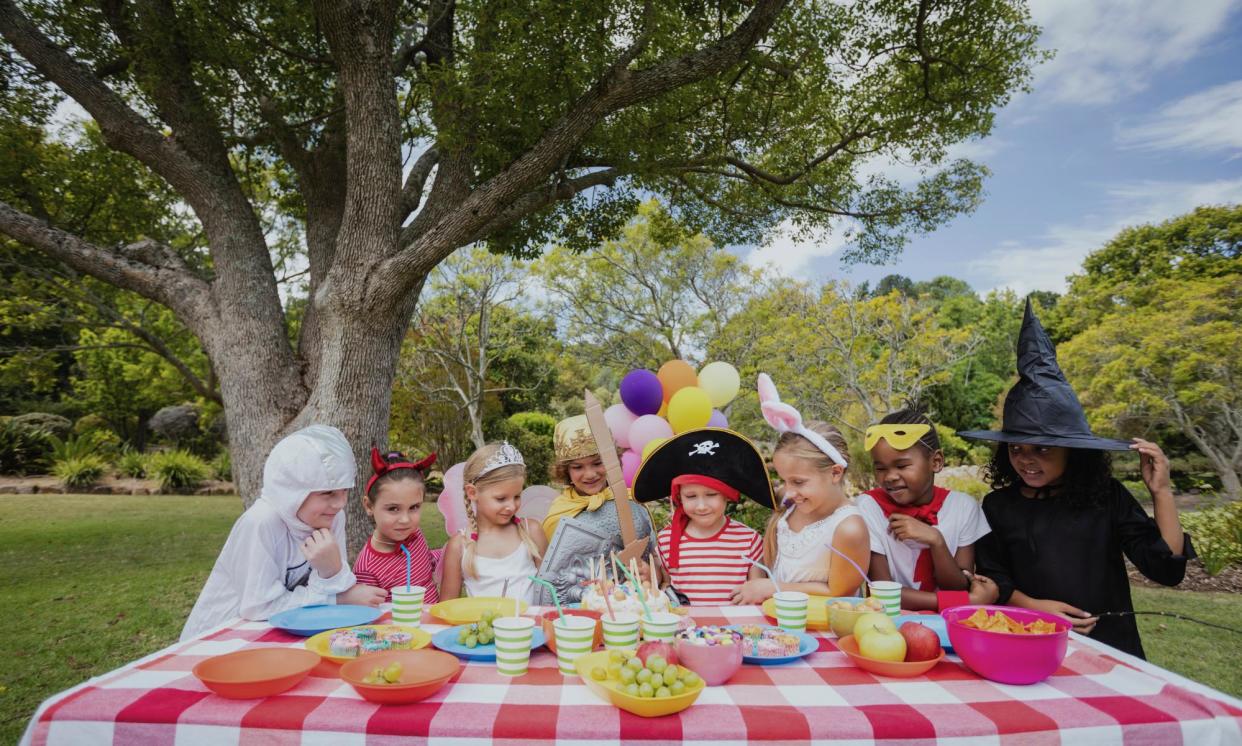When the cost of living bites, some things have to give – including the things you love

For Cathi Olivieri, giving up on music would be like giving up on life. To the 55-year-old professional classical musician, who plays and teaches viola and violin, having music in her life is “like an imperative that you have to obey”.
But lately, she’s had to make hard decisions about her music – a direct consequence of the rising cost of living.
“As a musician I value live music experiences, but these have been mostly missed out on as I can’t afford them,” Olivieri says. “Even the bands that I love that my colleagues play in. Tickets for those are just getting more expensive while they try to cover the cost of their lives – and rightfully so.”
It’s not just music. It’s “meals out or hanging out in cafes, steak nights (only the cheapest ones, which all went up in price and down in size after Covid) are all rare now, and at home it’s rationing and only the necessities,” she says.
It’s also holidays: Cathi and her son Theo last went overseas when he was two. He’s now 18, and the trips they have managed in the 16 years since have been “sporadic, and less than a week maximum”.
The furthest away they’ve been from their home town of Fremantle, in Western Australia, is Exmouth, about 1,000km north. While that was “absolutely gorgeous and great,” Olivieri says, “I just want to travel”.
The cost of participation
Culture is a cost-of-living issue. When Guardian Australia asked colleagues, friends and members of the public about the things they were giving up due to financial pressures, the cultural portrait they painted was bleak.
Gone were the art classes, swimming lessons, and birthday parties for children. Trips to the cinema or the theatre. Nights out with friends. Travel – whether by aeroplane or toll road. Extracurricular or community sport. And the primary barrier is money.
It is tough at the moment
Nathan McLean
For community sporting organisations that rely on player memberships for their mere existence, player attrition due to cost is an obstacle that doesn’t just affect the financial solvency of a club or its ability to field a team, but the very shape of the club’s community.
Nathan McLean, the vice-president of the Footscray United Rangers community football club, in Melbourne’s west, says players have found it increasingly difficult to stump up cash for membership, let alone the uniforms, mouthguards, boots and other required playing gear.
Then there’s the cost of travelling long distances for games, and managing any injuries throughout the season.
Recent data from the Australian Sports Commission shows the average Australian adult spent $1,304 on participating in sport in the 2022-2023 financial year, while the average annual cost for a child under 14 was $1,369. It’s a significant leap since the onset of Covid: the average annual cost for adults in 2018-2019 was $913 and for children $882.
“It is tough at the moment [for players],” McLean says. “We think football is for everyone, and every individual is welcome to play. So we looked at a range of different disadvantaged groups to see what we can do with the skills and strengths and networks we have.”
The Rangers came up with ways to offset some of the cost burden on players, particularly those in its fledgling adult women’s team, children with disabilities and refugees. They set up a financial hardship bursary, which has allowed them to support a handful of players to play for free. Their entire disability sport program is paid for by a corporate sponsor.
Last year, the club raised funds for a bursary especially dedicated to assisting players from the region’s refugee communities. Currently, the bursary supports a cohort of 13 players across its 11 teams.
“Soccer is such a simple game to bring people together. That’s why I love it,” McLean says. “But still have a lot of people feeling the pinch … There’s definitely a challenge there.”
‘Music is a therapeutic pursuit’
Theo Olivieri, Cathi’s son, is a first year major in creative writing and screen arts at Curtin University. This semester, he took up a photography subject, which he loves.
“I have been taking all my assessment photos on this little compact camera that I got in 2017, a little digital camera, because it’s the only camera I have. My mum got it for me a few years ago,” he says.
But he notices the drawbacks of the older equipment during class presentations. While the university allows students to borrow newer and more sophisticated gear for a couple of days at a time, Theo says the short loan times are not enough to teach himself how to use the technology properly, let alone incorporate that understanding into his creative vision.
“Lots of times I look at the other students’ photos and think, compositionally, we’re on the same level, but the quality of the images is a lot, lot better than mine,” he says.
Cathi Olivieri says she sees the effect of cost-of-living pressures play out for her music students, too.
The Victorian Music Teachers’ Association recommends teachers charge $89 an hour for private music lessons. A student taking weekly individual lessons over a school year would be paying about $3,500.
Related: Cheap, cheerful and booming: the Australian stores selling food at huge discounts
“I have had students quit due to financial stressors and not being able to afford lessons any more. I’ve still got some and I’m so grateful for them and their parents, because music is a therapeutic pursuit,” she says.
But the financial pressure goes both ways. “When times are tough it really does help you to listen to it, make it, learn it – and for me to teach it. But it’s not very rewarding financially.”


